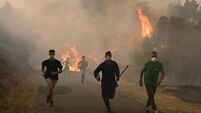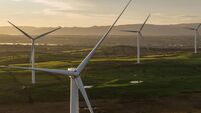John Gibbons: What happens at the poles profoundly affects all life on Earth

Seals are seen on floes off Horseshoe Island as the floes melt due to global climate change in Antarctica. Turkish scientists, within the scope of the 6th National Antarctic Science Expedition, monitored the global climate change and followed the glaciers that provide the heat balance of the world and decrease every year. Picture: Sebnem Coskun/Anadolu Agency via Getty Images
At nearly 14 million square kilometres in area, Antarctica is a gigantic landmass, around one and a half times the size of the continental United States. The ice shelves perched on top of this vast southern continent contain an almost unimaginable 26 million cubic kilometres of frozen water. A single cubic kilometre of ice weights one billion tonnes.
This frozen giant has lain dormant for at least the last 15 million years. Now, there are worrying signs that it is beginning to stir from its deep slumber.
CLIMATE & SUSTAINABILITY HUB
















